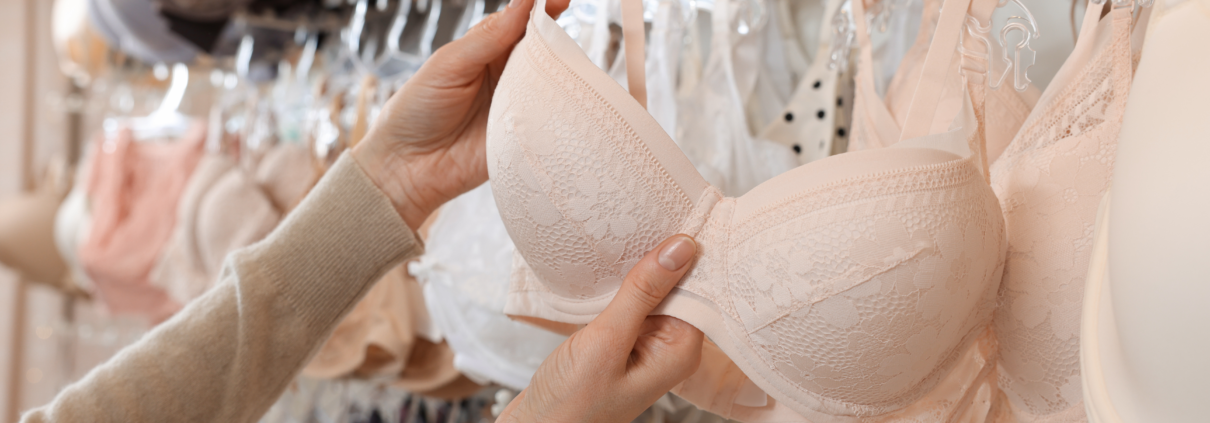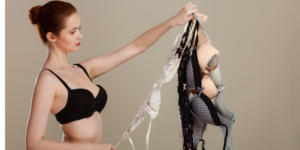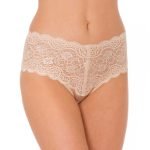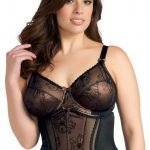Bra 101 | Exclusive Bra Sister Sizes: The secret every woman should know
Introduction
Bra Sister sizes : Finding the perfect bra can feel like an uphill battle. With a myriad of sizes, styles, and fits, it’s easy to get lost in the sea of options. One crucial aspect often overlooked is the concept of sister sizes. Understanding these can transform your bra shopping experience and help you achieve that elusive perfect fit. In this article, we’ll explore the ins and outs of sister sizes, present ten surprising examples, and offer tips for measuring and addressing common fit issues.
What are Sister Sizes?
Defining Sister Sizes
Sister sizes refer to alternate bra sizes that can provide a similar fit, though they may differ in band and cup size. For example, if you wear a 34B, your sister sizes would be 32C and 36A. The concept is based on the principle that when you adjust the band size, you may need to adjust the cup size as well to maintain the same fit. This versatility can be invaluable when trying to find the most comfortable and flattering bra.
Why They Matter
Understanding sister sizes can save you time and frustration while shopping. Sometimes, a bra in your regular size might not fit correctly due to sizing inconsistencies across different brands. Sister sizes open up a world of options, making it easier to find the right style, especially if a particular size is out of stock. By knowing your sister sizes, you can navigate these challenges with more confidence and ease.
How Sister Sizes Work
Understanding the Bra Size System
The traditional bra sizing system consists of a number and a letter, where the number indicates the band size, and the letter indicates the cup size. Band sizes are typically measured in inches, while cup sizes denote the volume of the bust in comparison to the band size. Sister sizes relate directly to this system but offer alternative options that may fit better depending on brand and style.
Examples of Sister Sizes
Sister sizes operate on a simple pattern: if you go down one band size, you go up one cup size, and vice versa. Here’s a quick look at how this works:
34B = 32C and 36A
36C = 34D and 38B
38D = 36DD and 40C
40DD = 38E and 42D
These examples illustrate how you can explore various fits by experimenting with different sizes.
Top 10 Surprising Sister Sizes
- A to B Size Shift
Many women might not realize that shifting from an A cup to a B cup can mean adjusting the band size for optimal comfort. If a 34A feels too tight, a 36A or 34B might provide a better fit.
- C to D Size Shift
Moving from a C to a D cup can be beneficial if you find that your current bra lacks support. A 34C can transition to either a 32D for a tighter fit or a 36B for a looser alternative.
- D to DD Size Shift
Transitioning between D and DD sizes, it’s essential to consider the band size as well. A 36D could become a 34DD, providing a snugger, supportive fit while still allowing room in the cup.
- E to F Size Shift
In some brands, an E cup is equivalent to a DDD, making the shift to F a natural progression. A 38E might convert comfortably to a 36F, perfect for those needing extra volume without compromising the band fit.
- F to G Size Shift
If you’re wearing a 34F and it’s feeling snug, a 36F or a 34G could provide the needed relief. The importance of experimenting with these variations cannot be overstated.
- G to H Size Shift
Going from a G to an H cup can improve overall comfort. A 40G can switch to a 38H, making the bra more supportive while keeping the same cup volume.
- H to I Size Shift
The transition from H to I sizes can feel significant, especially for larger busts. A 42H might find a more suitable fit in a 40I, allowing for customization based on comfort and style.
- I to J Size Shift
Finding the right fit in larger cup sizes is crucial. A 36I could easily transform into a 34J, which can often provide a better fit for individuals needing more help in support
- J to K Size Shift
For those wearing a 32J, the option of switching to 30K could offer a perfect balance between support and comfort. Remember, fit is subjective and varies by brand.
- K to L Size Shift
Finally, making the leap from K to L sizes can be daunting, but it’s often necessary. A 40K could adjust to a 38L, allowing for room without sacrificing support.
How to Measure Yourself for the Perfect Fit
Tools You’ll Need
The first step to finding your perfect bra is acquiring the right tools. All you need is a soft measuring tape, a pen, and paper to jot down your measurements. A mirror can help, but it’s not strictly necessary. Make sure to wear a non-padded bra to get the most accurate measurement.
Step-by-Step Measurement Guide
Begin by measuring your band size. Wrap the measuring tape snugly around your ribcage, just under your bust. Take the measurement and round it to the nearest whole number. If it’s an even number, add four inches; if it’s odd, add five inches. This total gives you your band size.
Next, measure your bust. Wrap the tape around the fullest part of your breasts while ensuring it’s parallel to the floor. Subtract your band size from this bust measurement; the difference will indicate your cup size. Use the cup size chart to convert this difference into an actual cup size.
Common Bra Fit Issues and Solutions
Too Tight or Loose
A common issue is the band being too tight or loose, which can lead to discomfort. If the band digs into your skin or slides up your back, it’s time to consider going up or down a size. Remember, the band should provide about 80% of the support, so it’s crucial to get this right.
Another indicator of an incorrect band size is the fit of the straps. If they’re constantly slipping off your shoulders, it could be a sign that the band is too loose, requiring a smaller size. Conversely, if the straps are digging in, you might need a larger band size to alleviate pressure.
Cups Overflowing or Gaping
Cups that overflow indicate that the bra size is too small, while gaps can signal that it’s too big. If your breasts spill out of the cups, moving to a larger cup size or adjusting to a tighter band might be necessary. On the other hand, if there’s space in the cups and they don’t fully encompass your breasts, consider going down a cup size.
When trying on bras, ensure you’re in a comfortable position and that your breast tissue is fully settled into the cup. Leaning forward while putting on the bra can help position your breasts correctly and provide a more accurate fit.
Tips for Finding Your Sister Size
Try Before You Buy
One of the best ways to find your sister size is to try on various options in-store or, if shopping online, ensure you have a flexible return policy. Don’t hesitate to experiment with different sizes, as you might be pleasantly surprised at how a seemingly different size can fit better than your usual choice.
When trying on bras, take a moment to move around, raise your arms, and check for comfort. Do not settle for a bra that feels off, even slightly. Remember, the goal is comfort and fit, not just aesthetics.
Consulting a Professional Fitter
If you’re still struggling to find the right fit, consider consulting a professional fitter. Many lingerie stores offer this service for free, and it can be an enlightening experience. A fitter can provide insights based on your body type and preferences, recommending styles and sizes you may not have considered.
In addition to personalized advice, a professional can measure you accurately, ensuring that you’re aware of your current size and any potential sister sizes. This knowledge is particularly helpful in navigating different brands that may have varying size charts.
Conclusion
Sister sizes can be a game-changer in the quest for the perfect bra. Understanding how they work, the various surprising sizes available, and how to measure yourself accurately can lead to a comfortable and supportive fit. Remember to try various sizes and consult professionals if needed, ensuring you have all the tools to find your ideal fit.
FAQs
What are sister sizes?
Sister sizes are alternate bra sizes that can provide a similar fit while differing in band and cup sizes.
Why is it important to know your sister size?
Knowing your sister size allows you to explore more options, especially when your usual size is unavailable, ensuring comfort and support.
How do I measure myself for a bra?
Measure your band size under your bust and your bust size at its fullest point. Subtract the band size from your bust size to find your cup size.
What should I do if my bra cups are overflowing?
If your cups are overflowing, consider going up a cup size or adjusting to a tighter band size.
Can I rely on sister sizes across different brands?
Yes, sister sizes generally apply across different brands, but it’s always best to try on bras when possible, as sizing can vary.
For more information see here !























Leave a Reply
Want to join the discussion?Feel free to contribute!